The document provides an introduction to socket programming, outlining the definition and types of sockets, along with client-server communication methodologies. It describes connection-oriented (TCP) and connectionless (UDP) protocols, detailing their characteristics and use cases, particularly in data transmission. Additionally, it covers the concepts of ports and addresses necessary for establishing communication between processes on different machines.
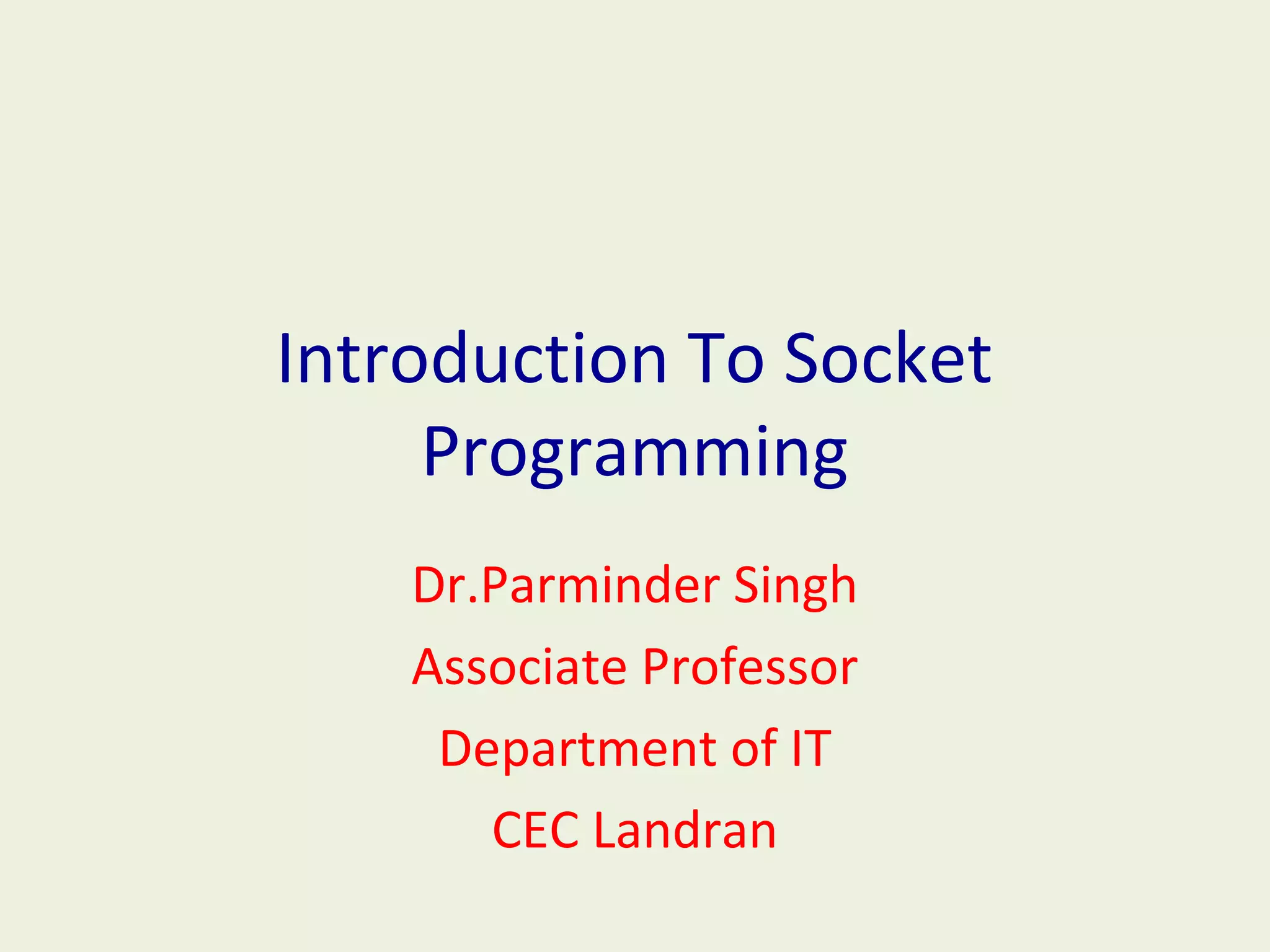
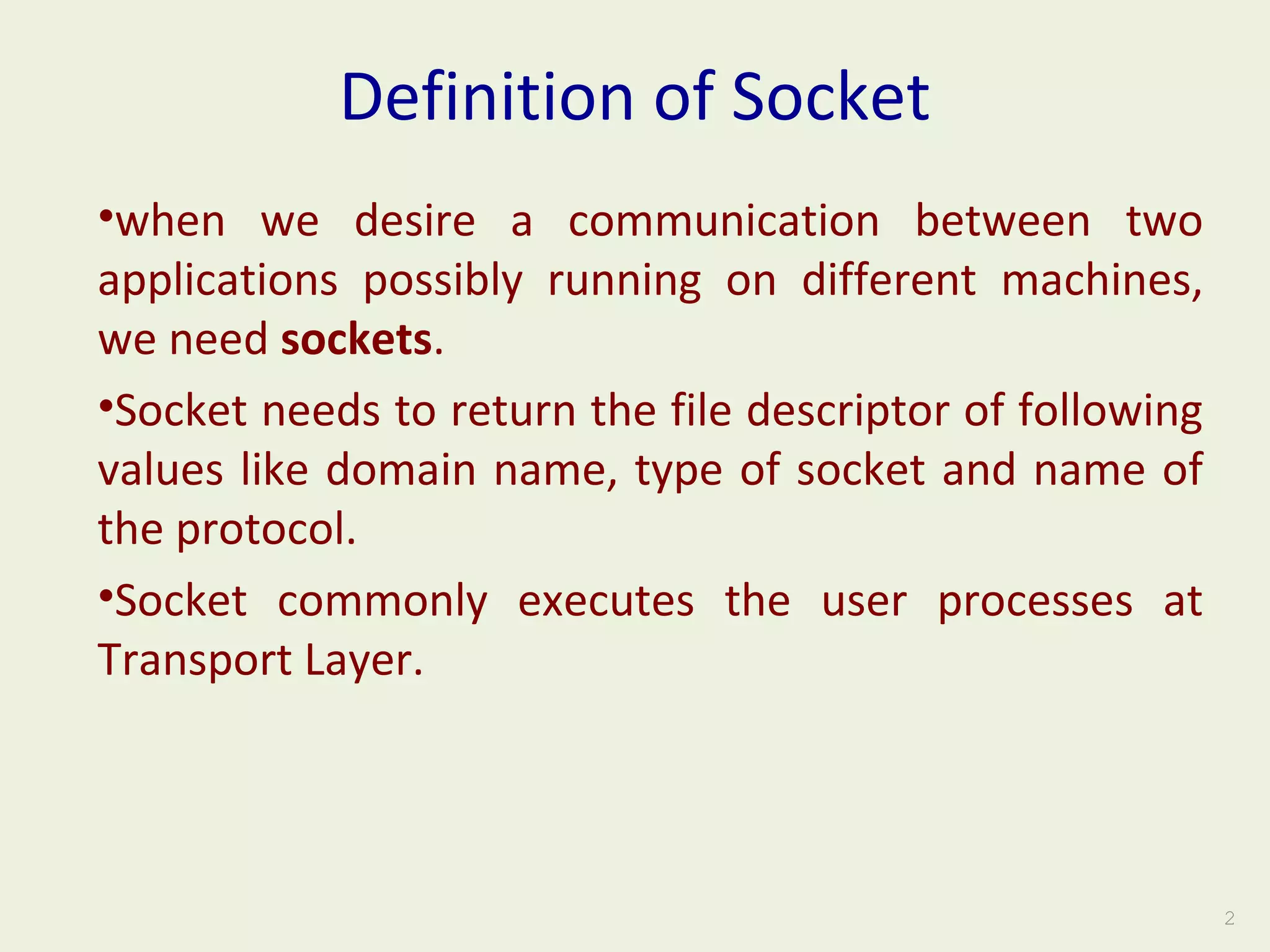
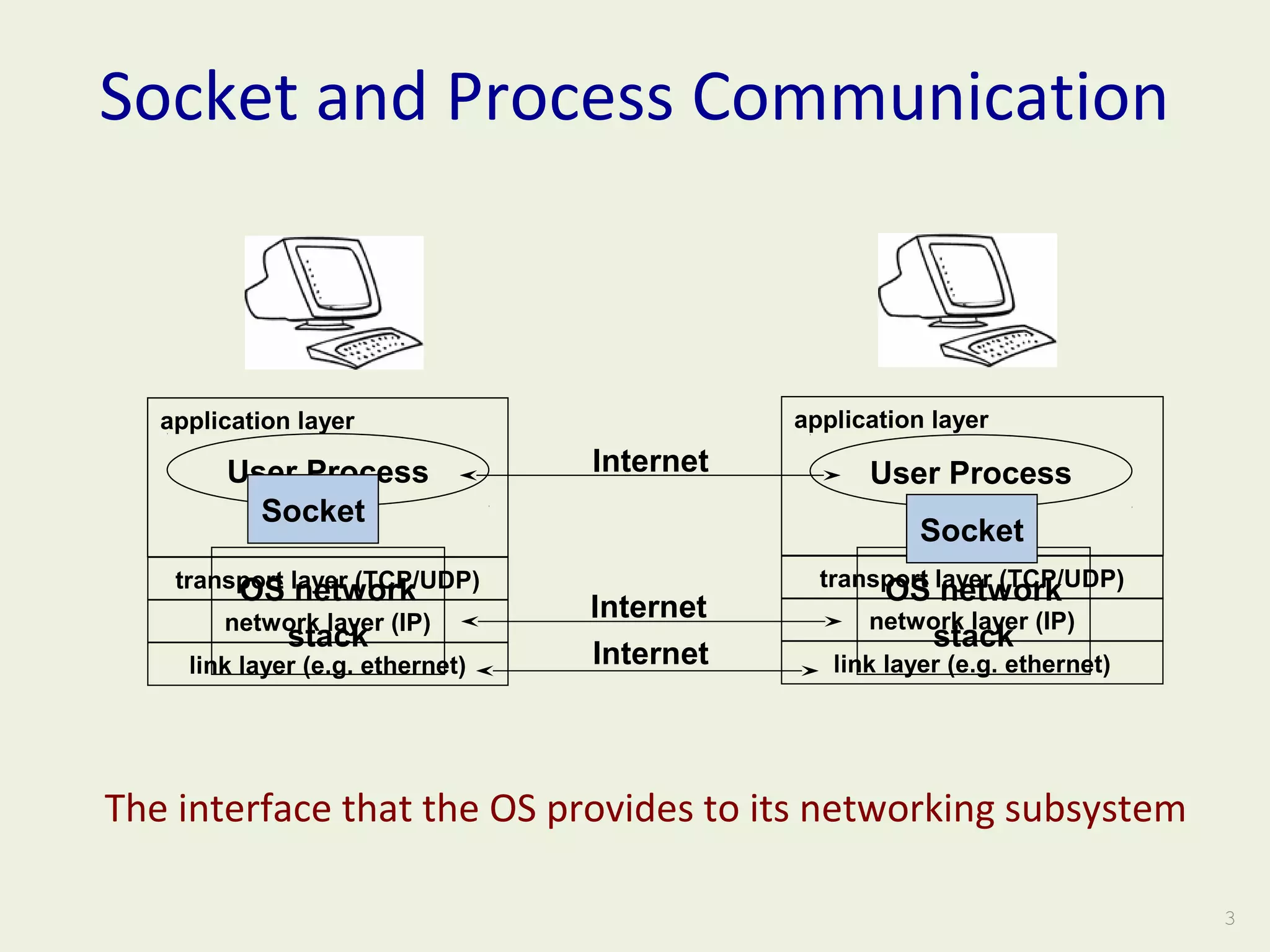
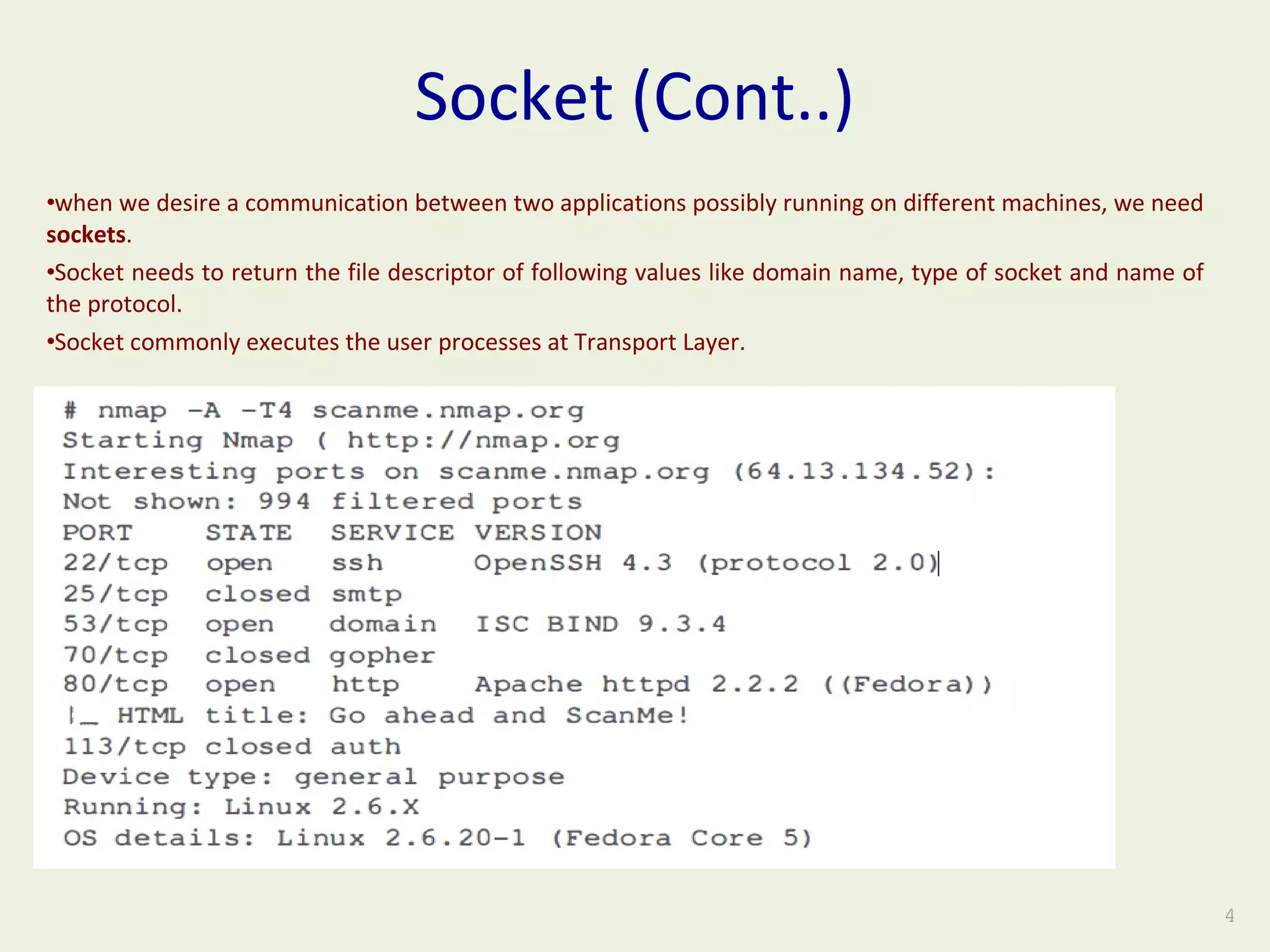
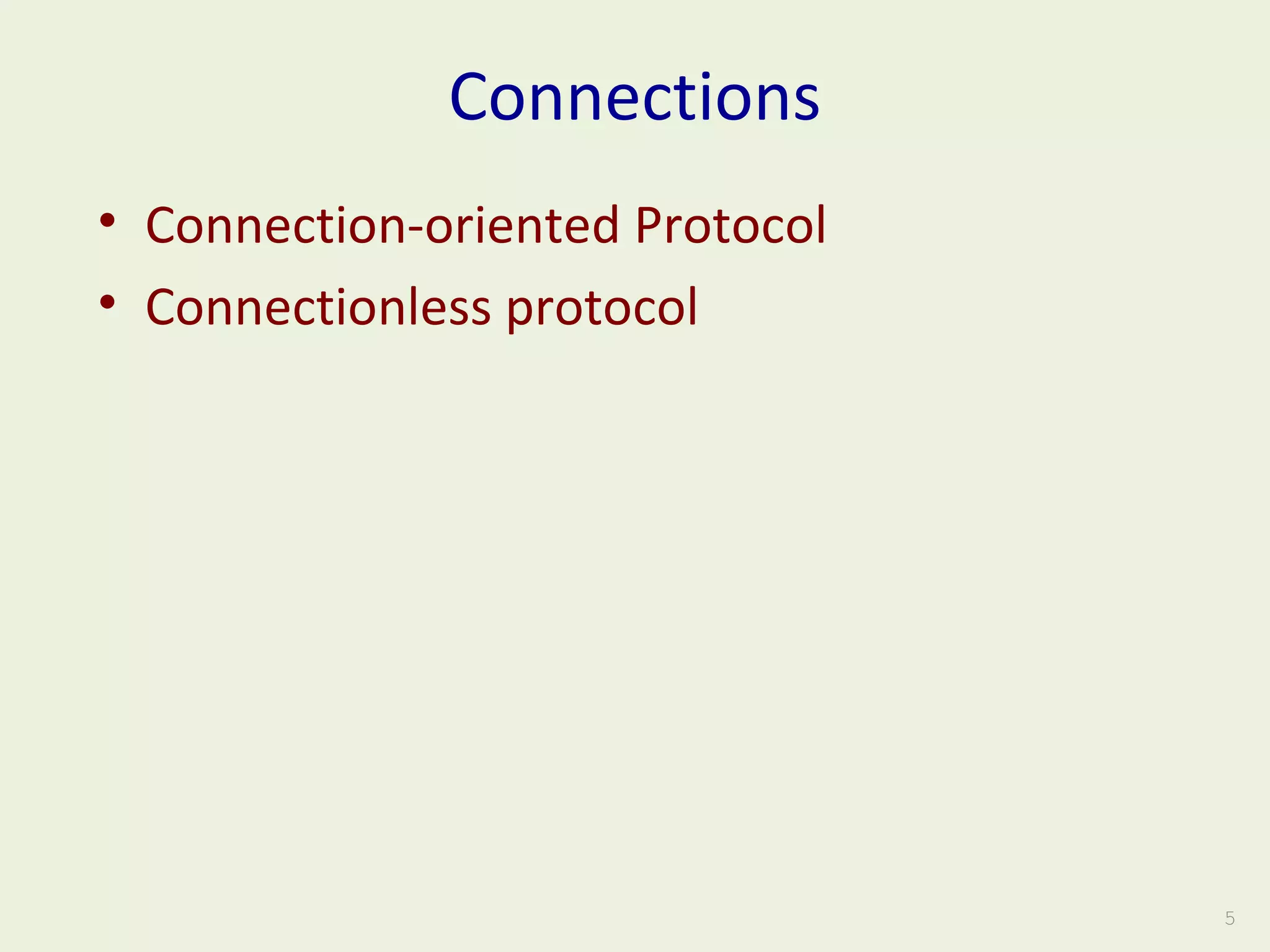
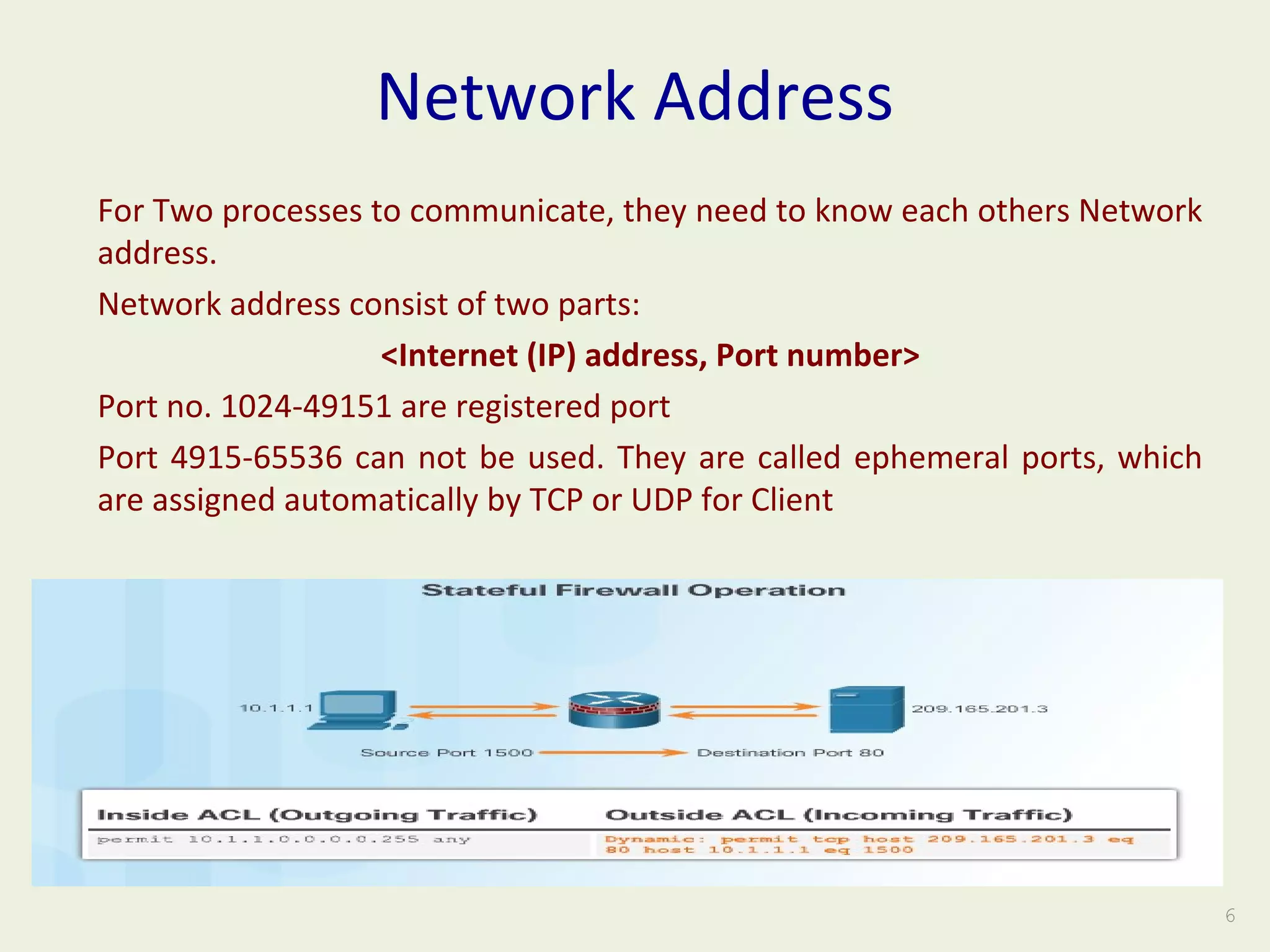
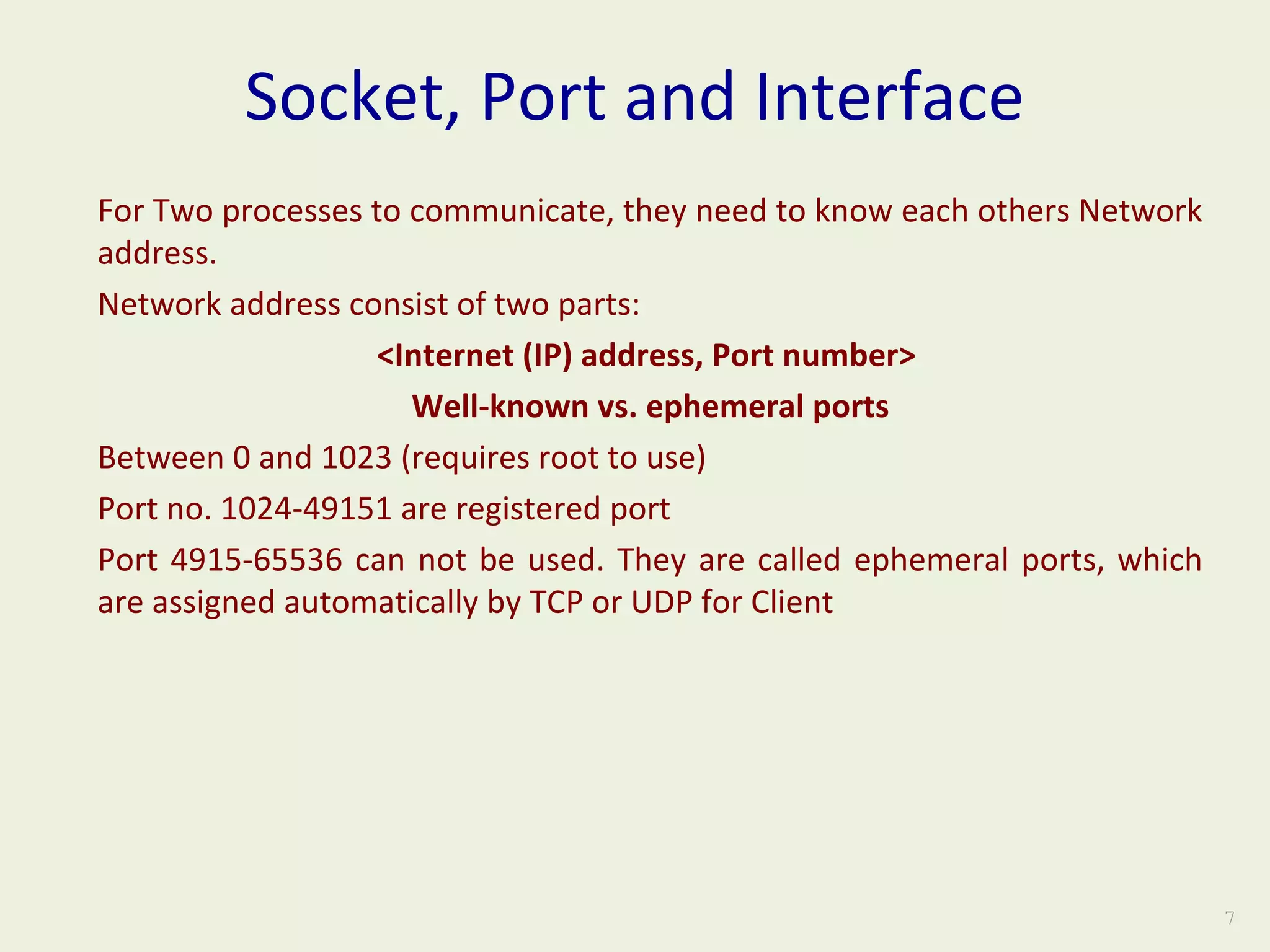
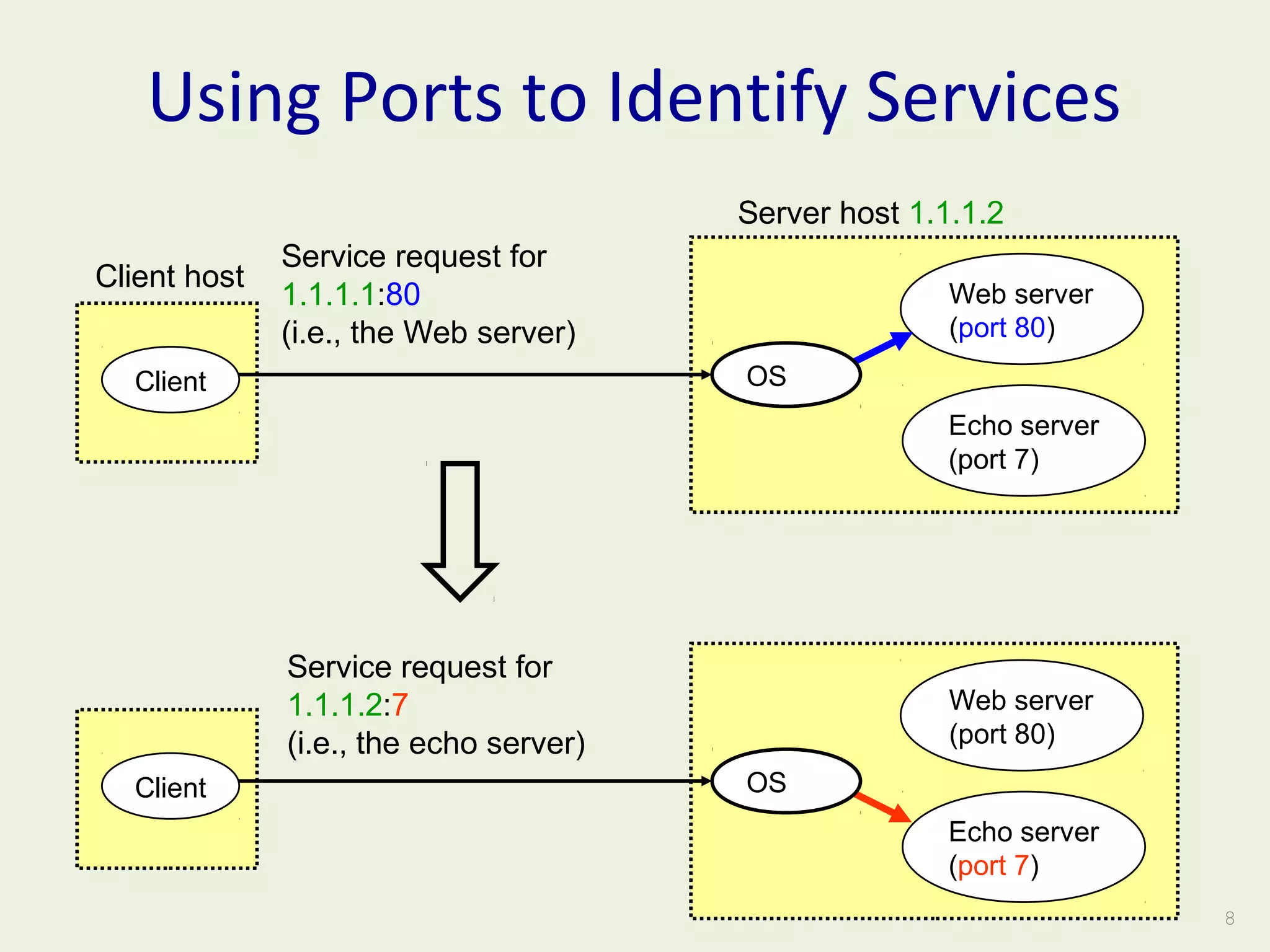
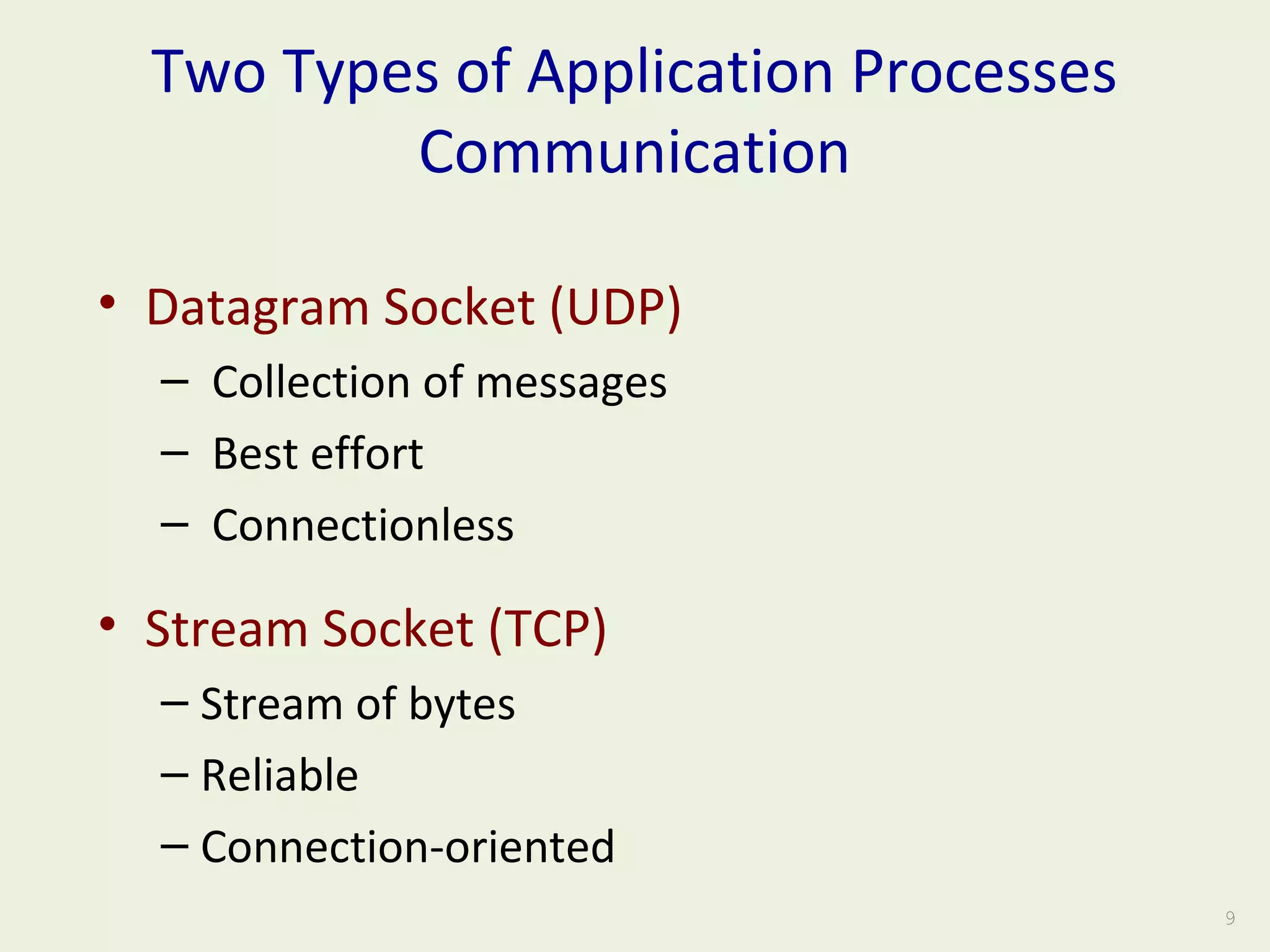
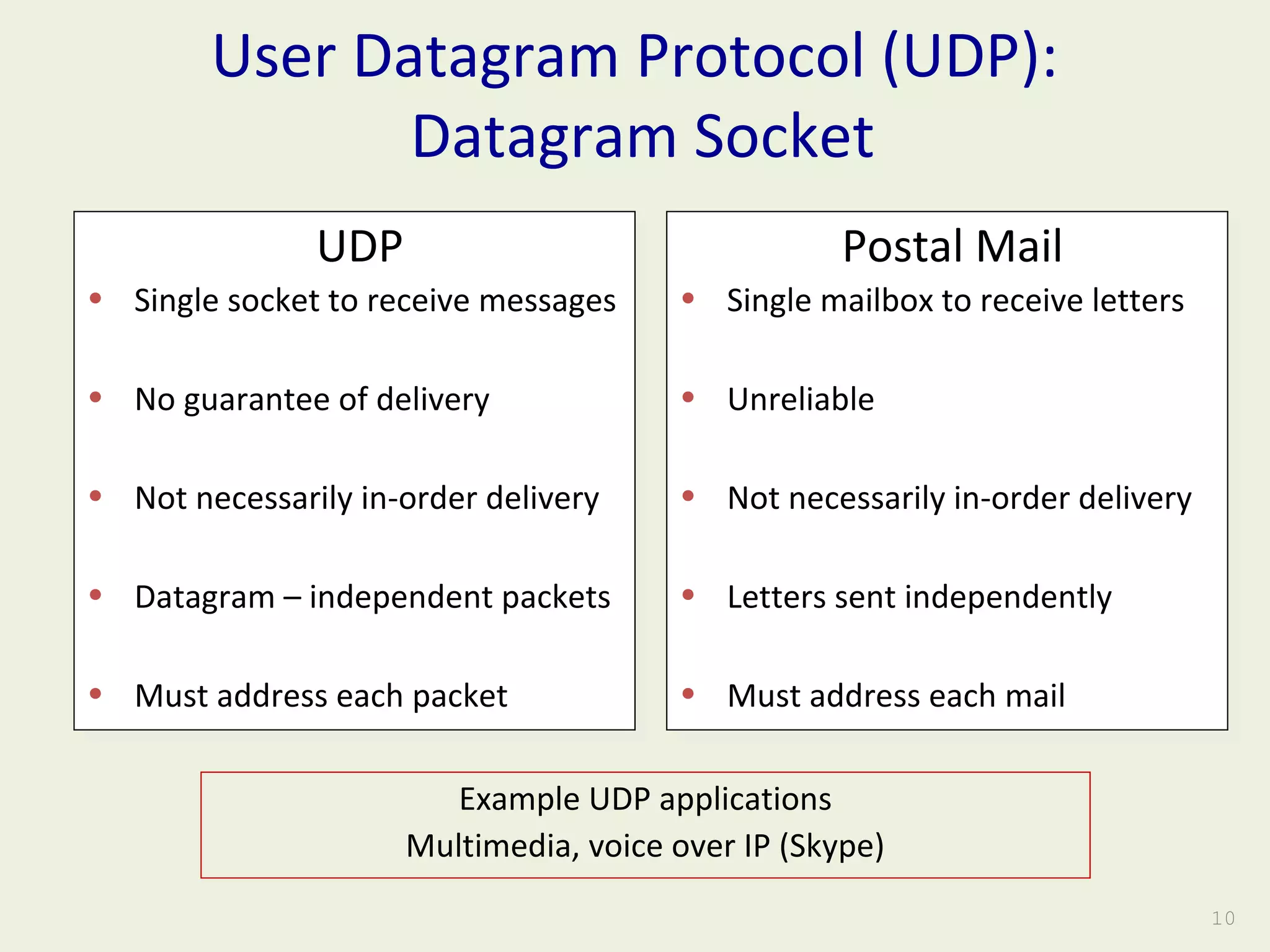
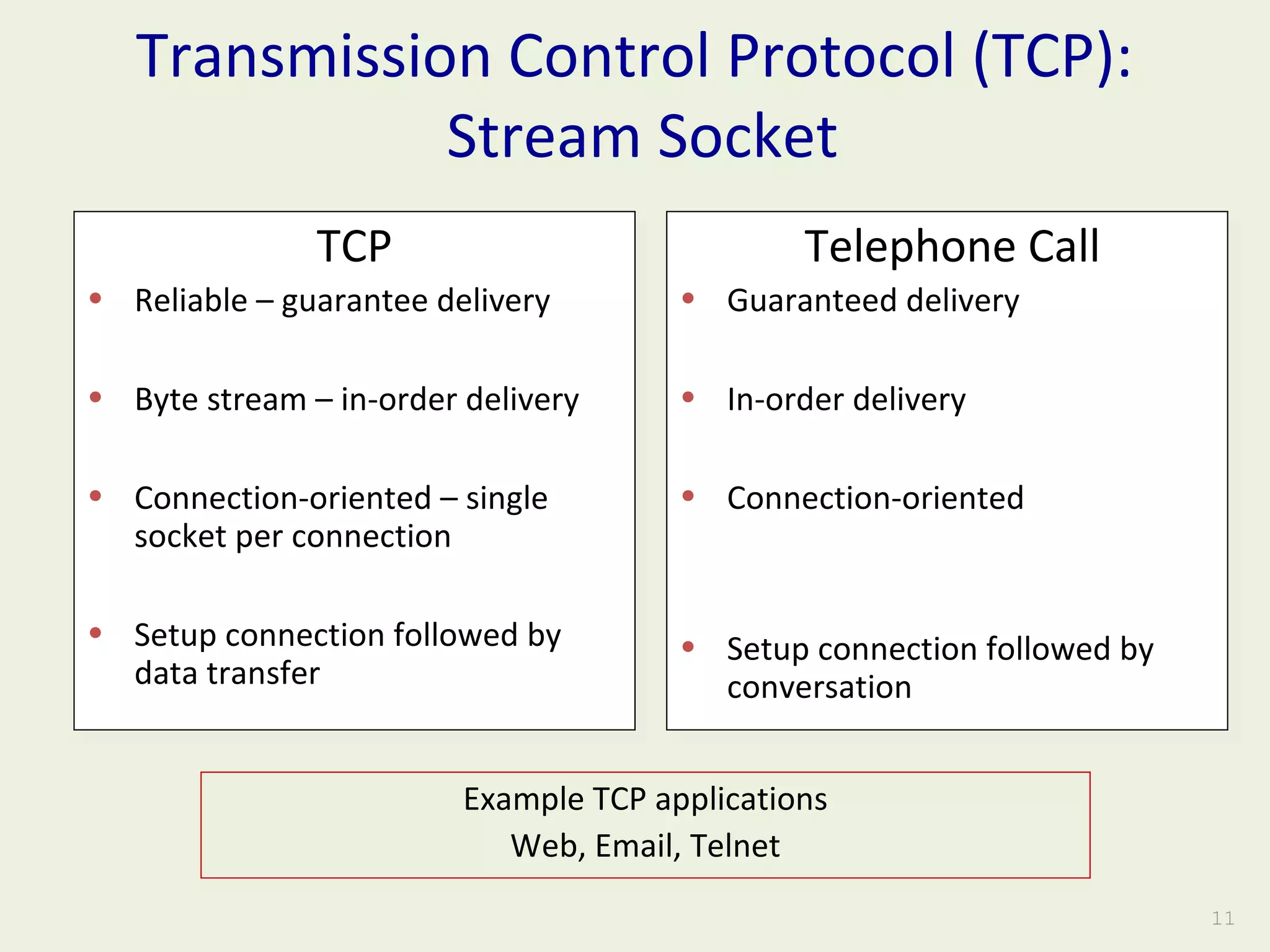
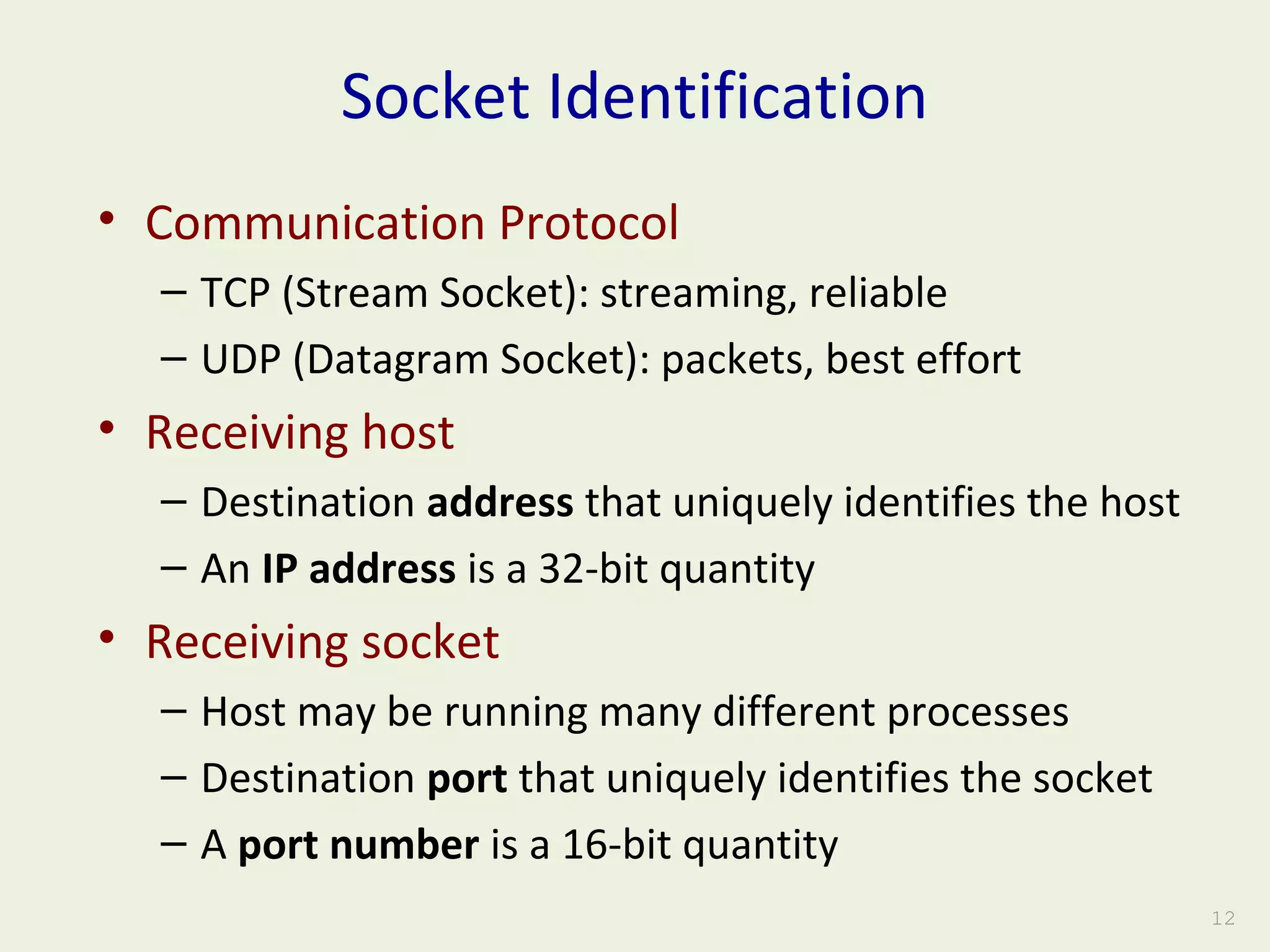
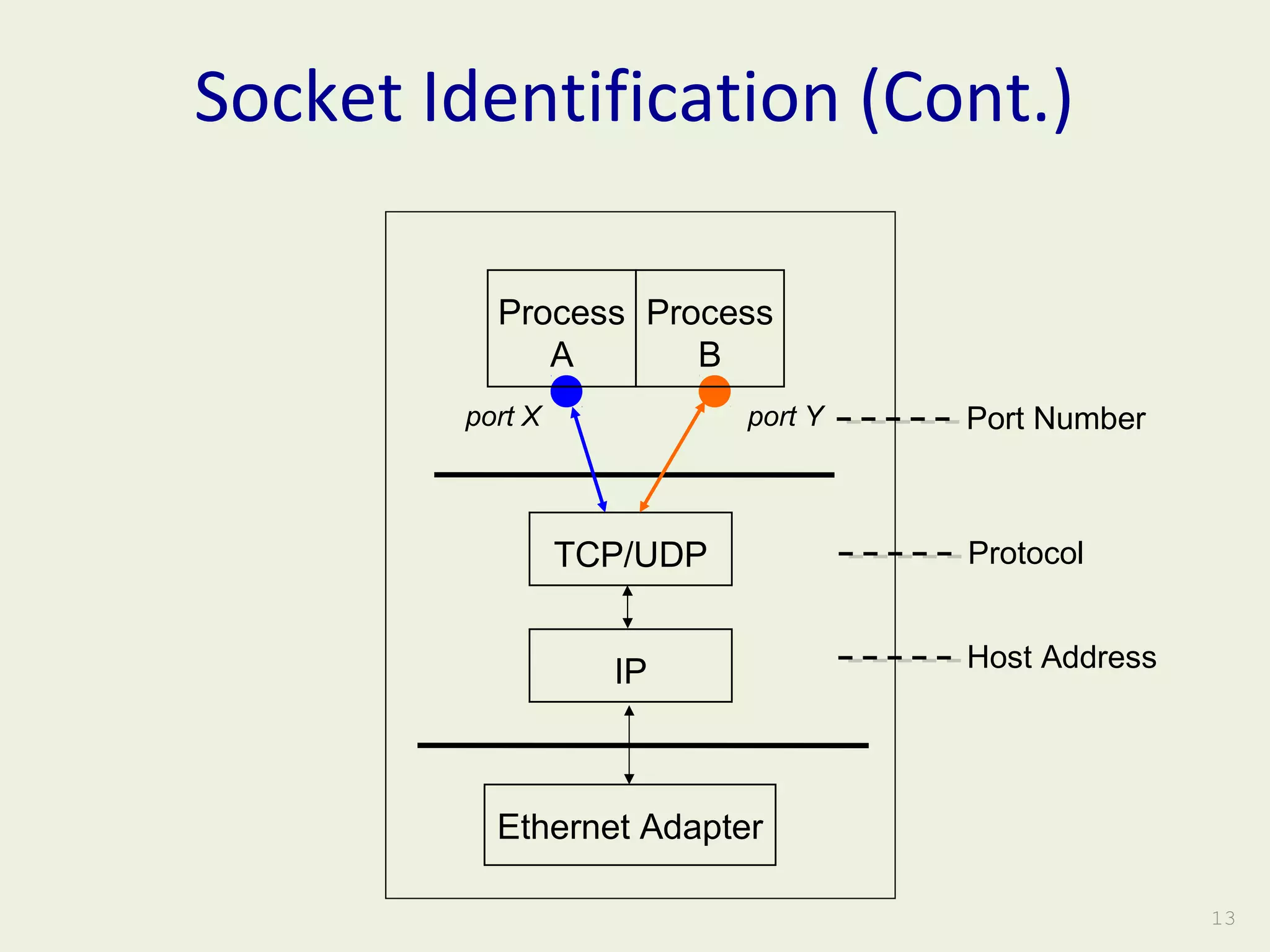
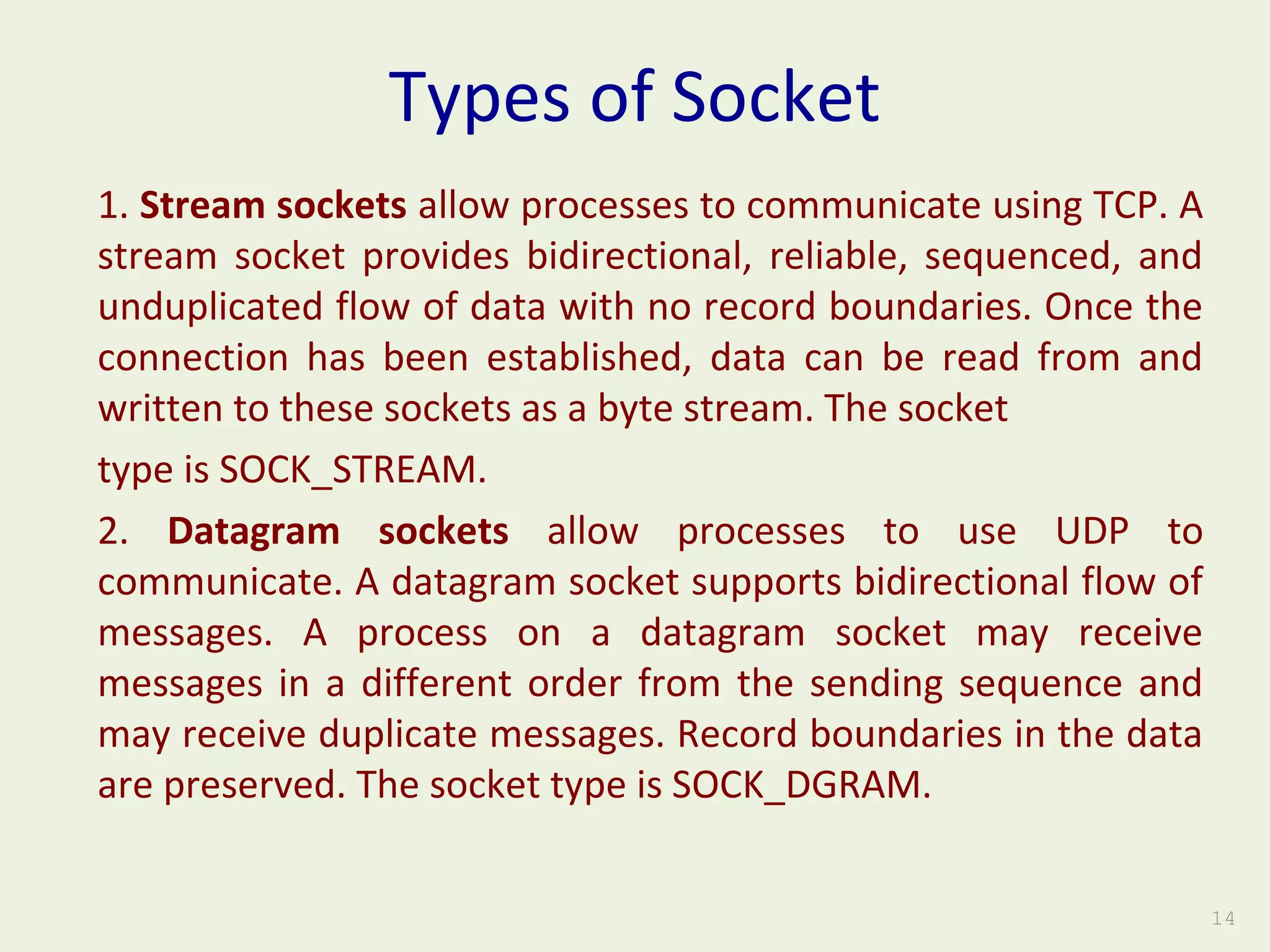
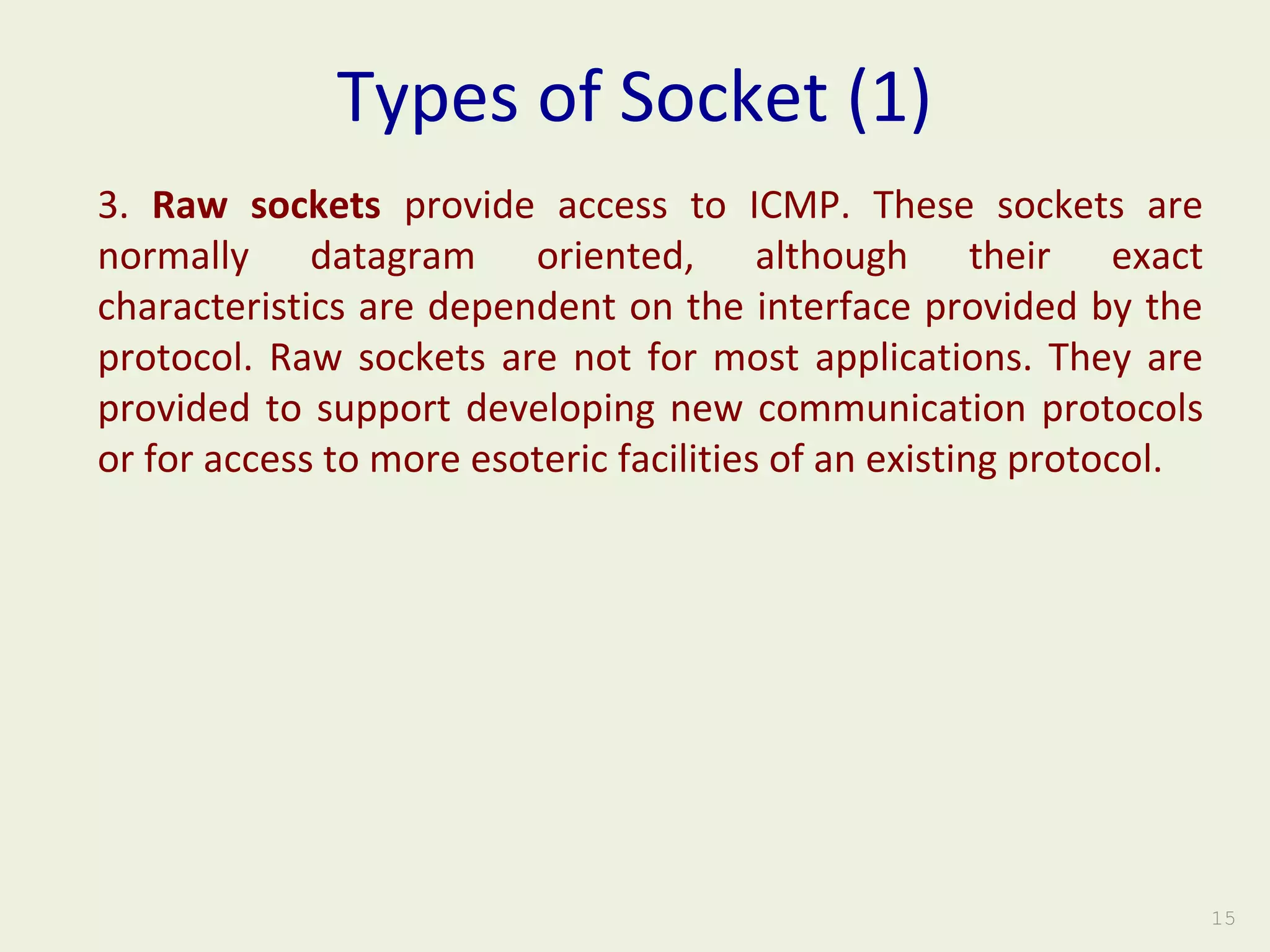
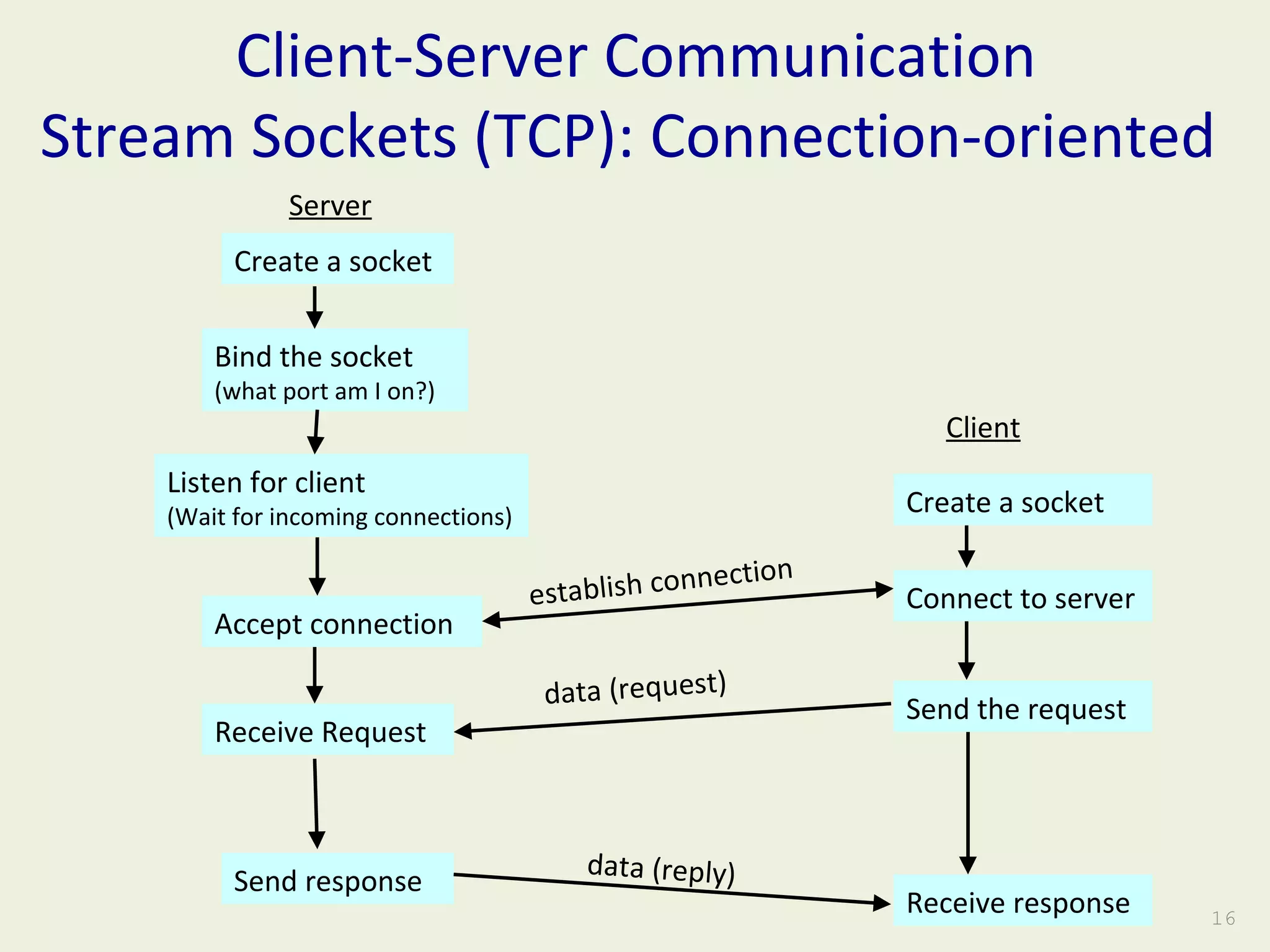
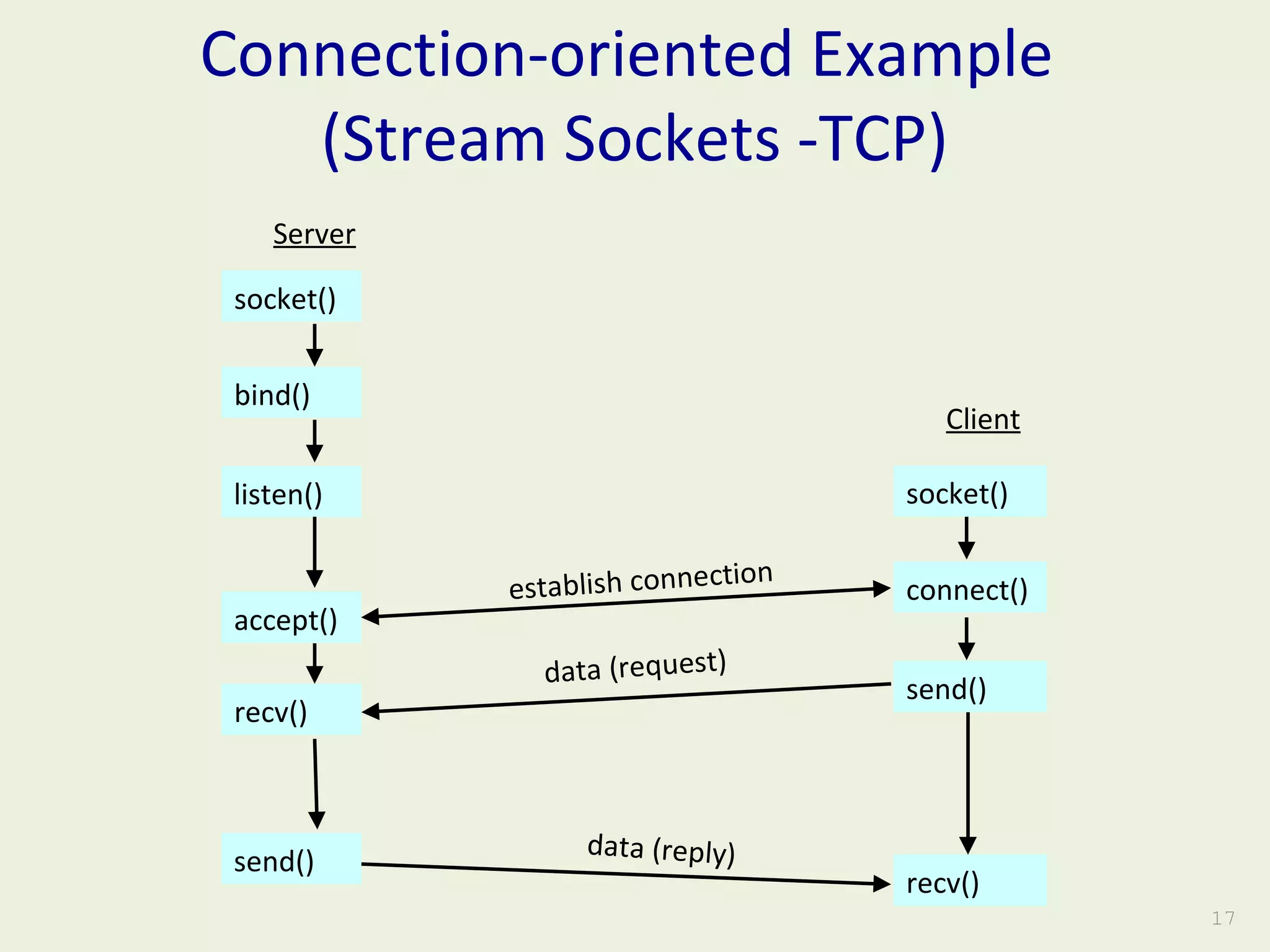
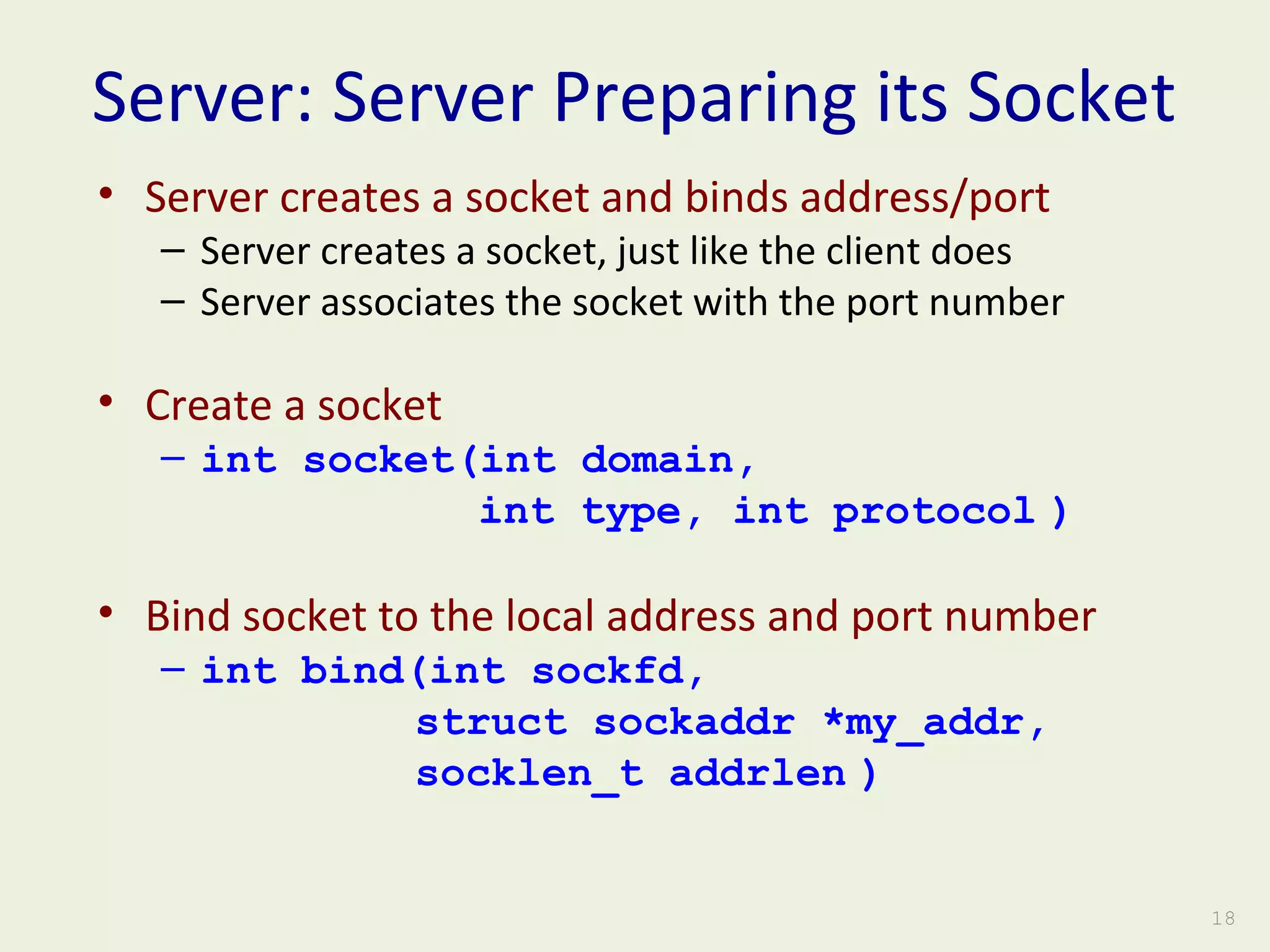
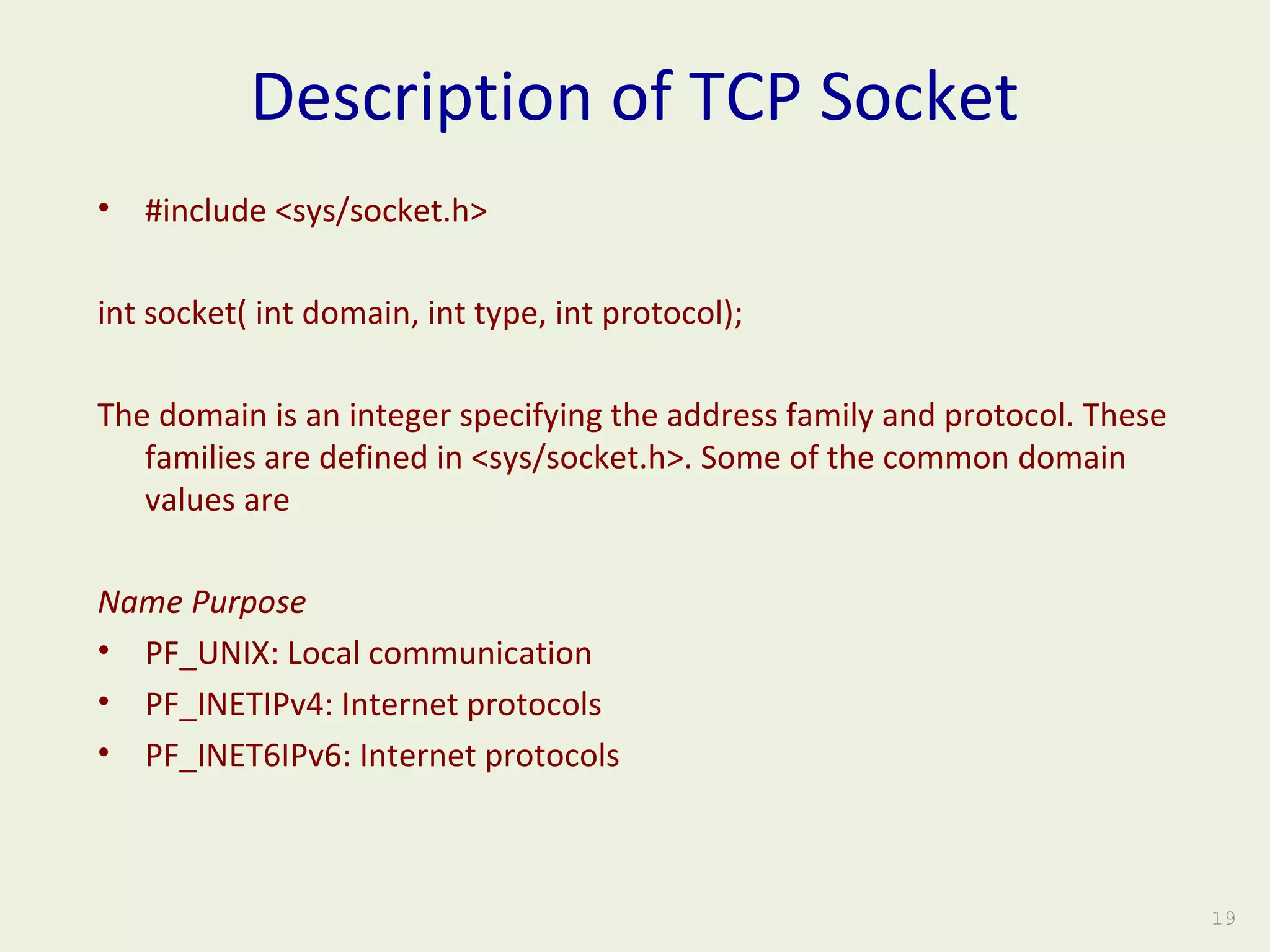
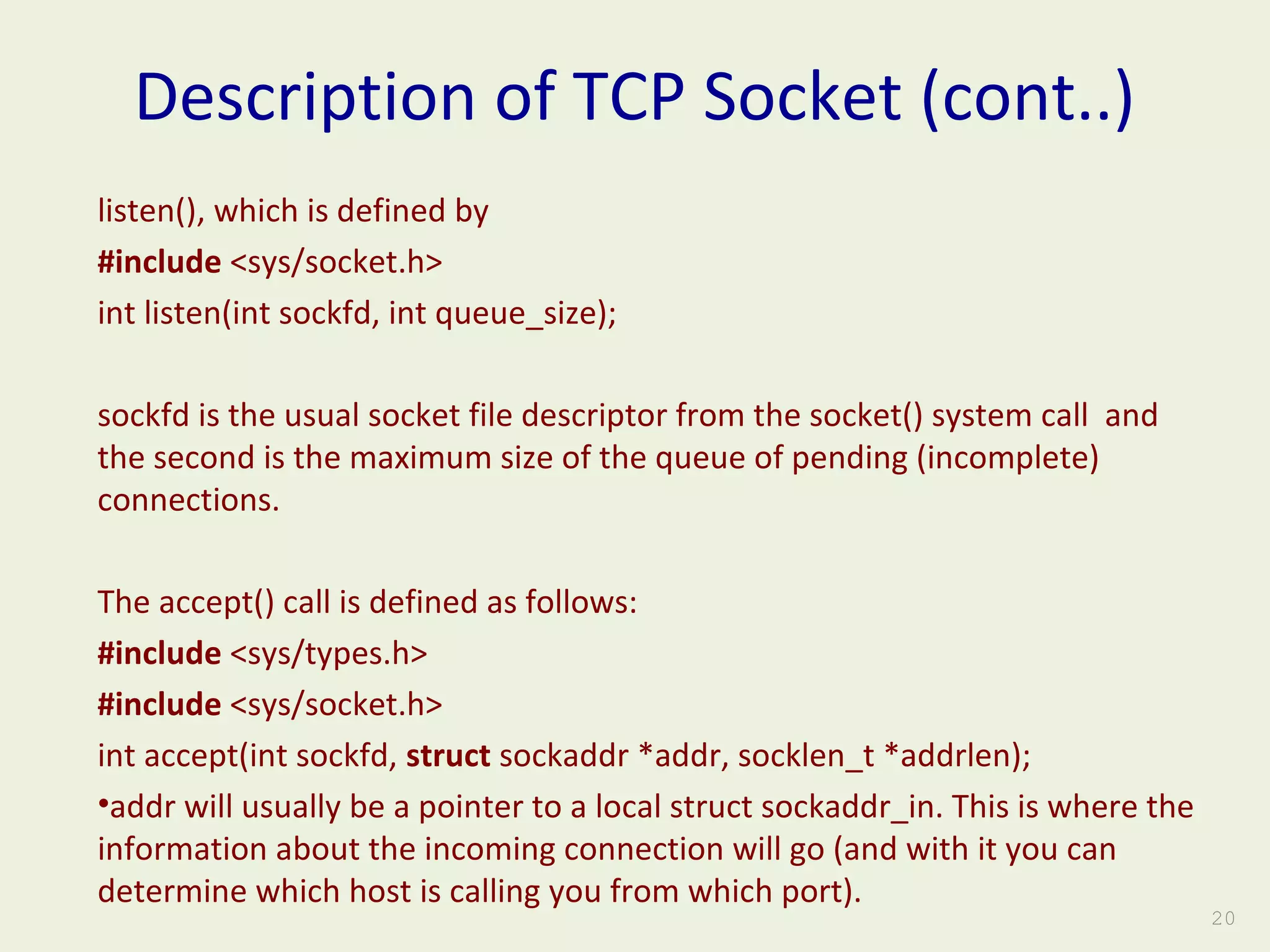
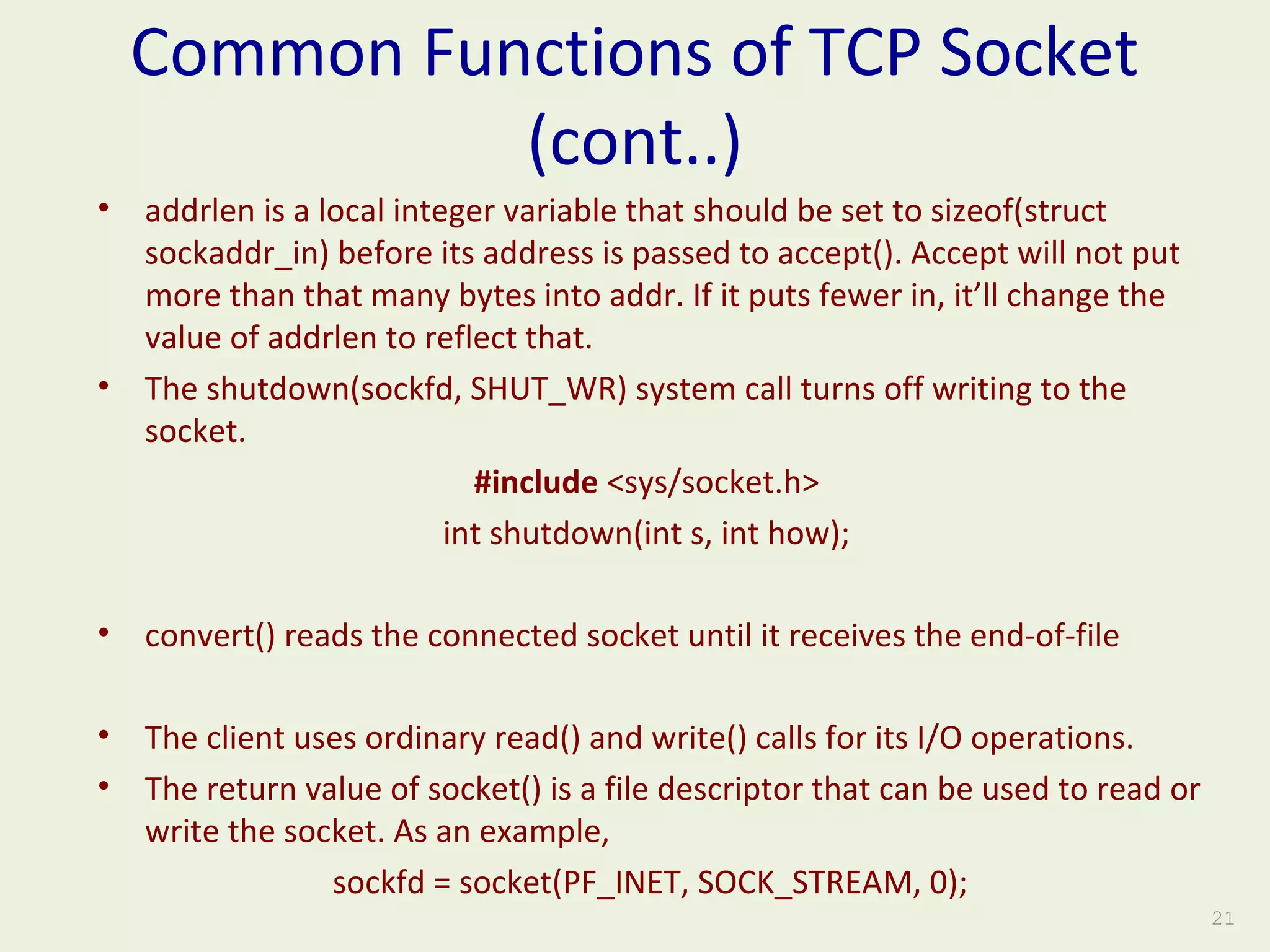
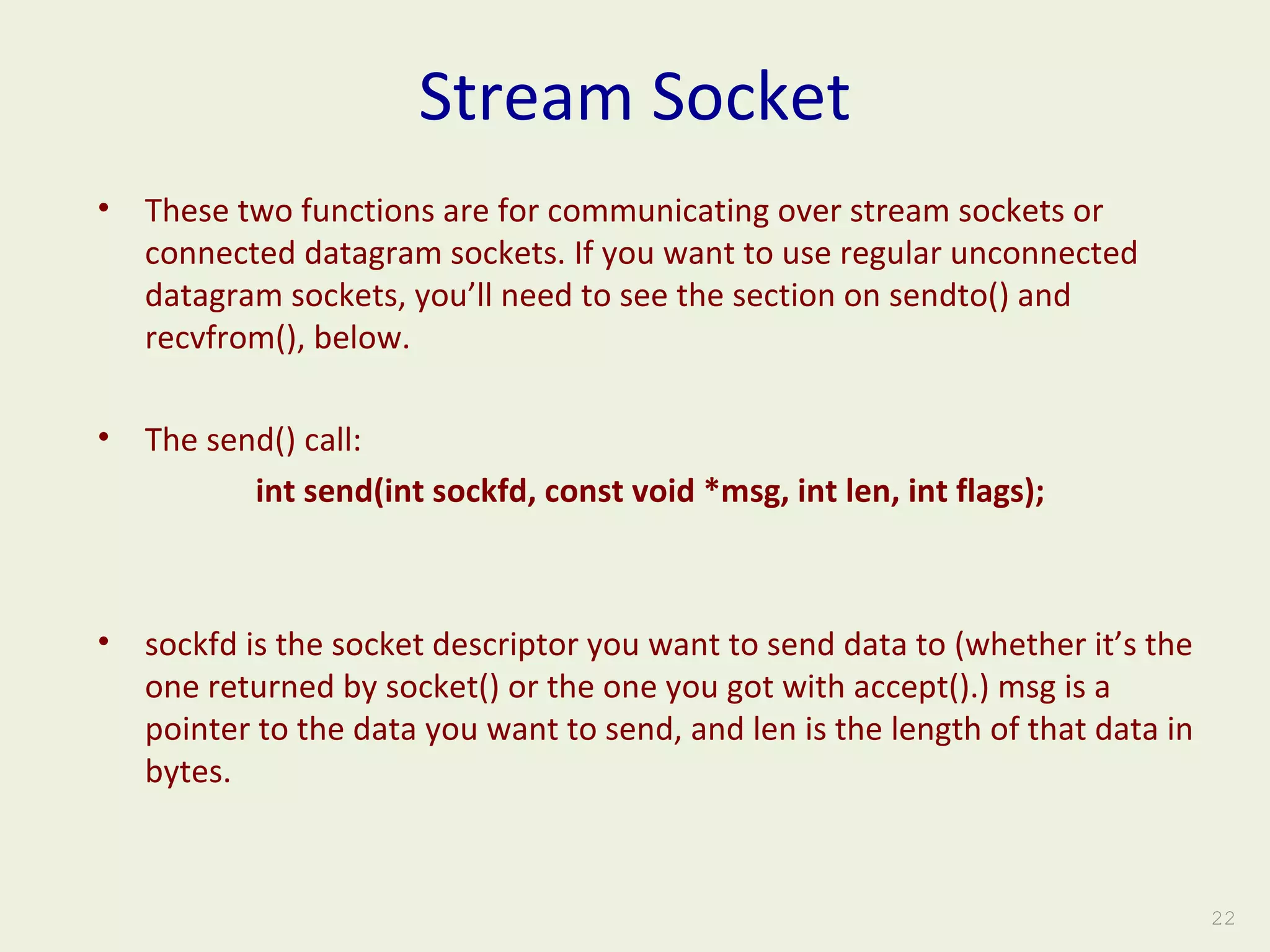
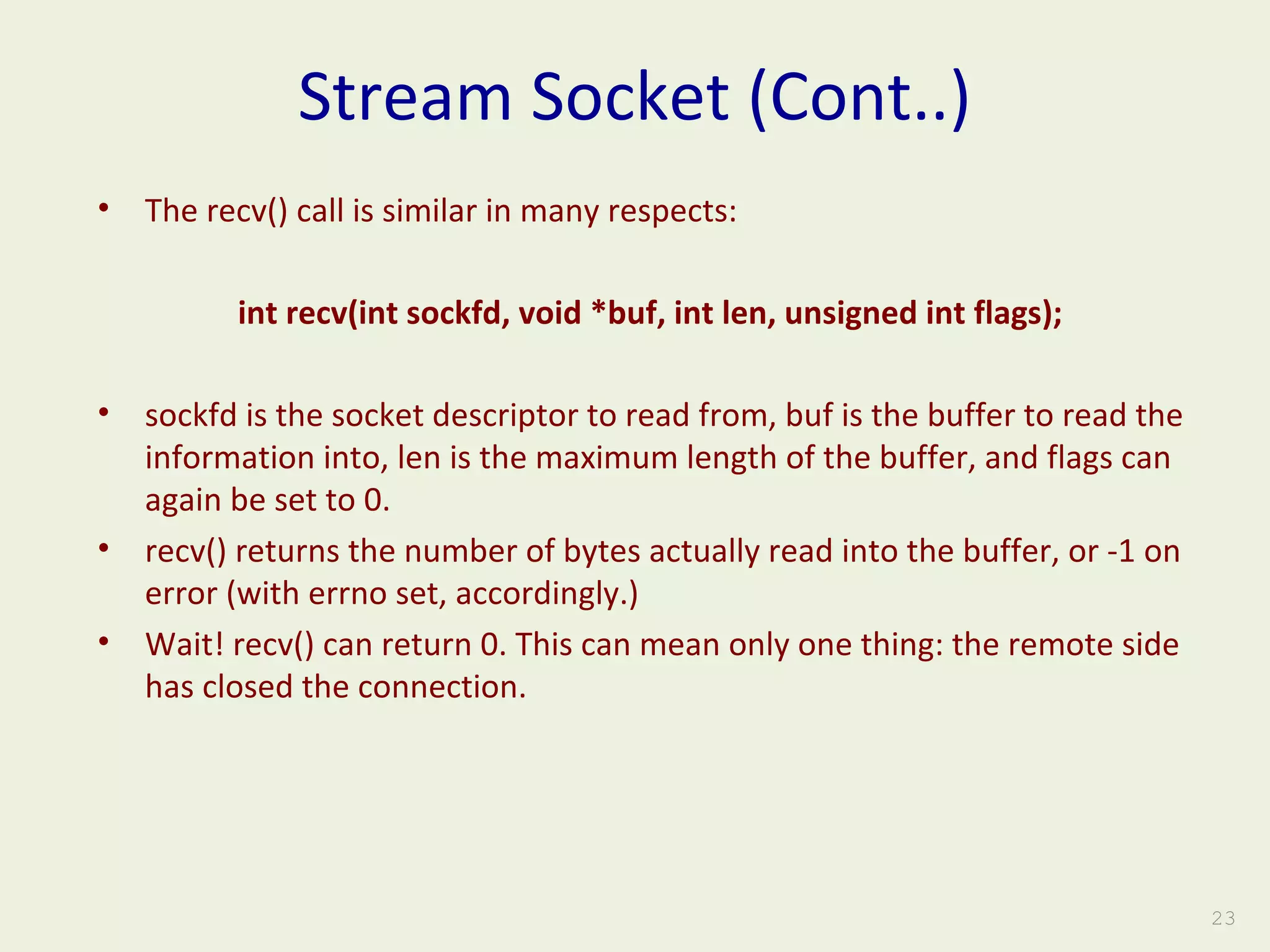
![Generic Socket The client does not need to remember the IP address of the server because generic socket are used to convert hostname to address translation. A generic socket address is defined by the sockaddr struct defined in <sys/socket.h>: struct sockaddr { sa_family_t sa_family; /* address family */ char sa_data[]; /* socket address */ }; The address structure for PF_INET, defined in <netinet/in.h>, would be struct sockaddr_in { sa_family_t sin_family; /* internet address family */ in_port_t sin_port; /* port number */ struct in_addr sin_addr; /* IP address */ unsigned char sin_zero[8]; /* padding */ 24](https://image.slidesharecdn.com/intro-socketprogramming-180410165041/75/Socket-Programming-24-2048.jpg)
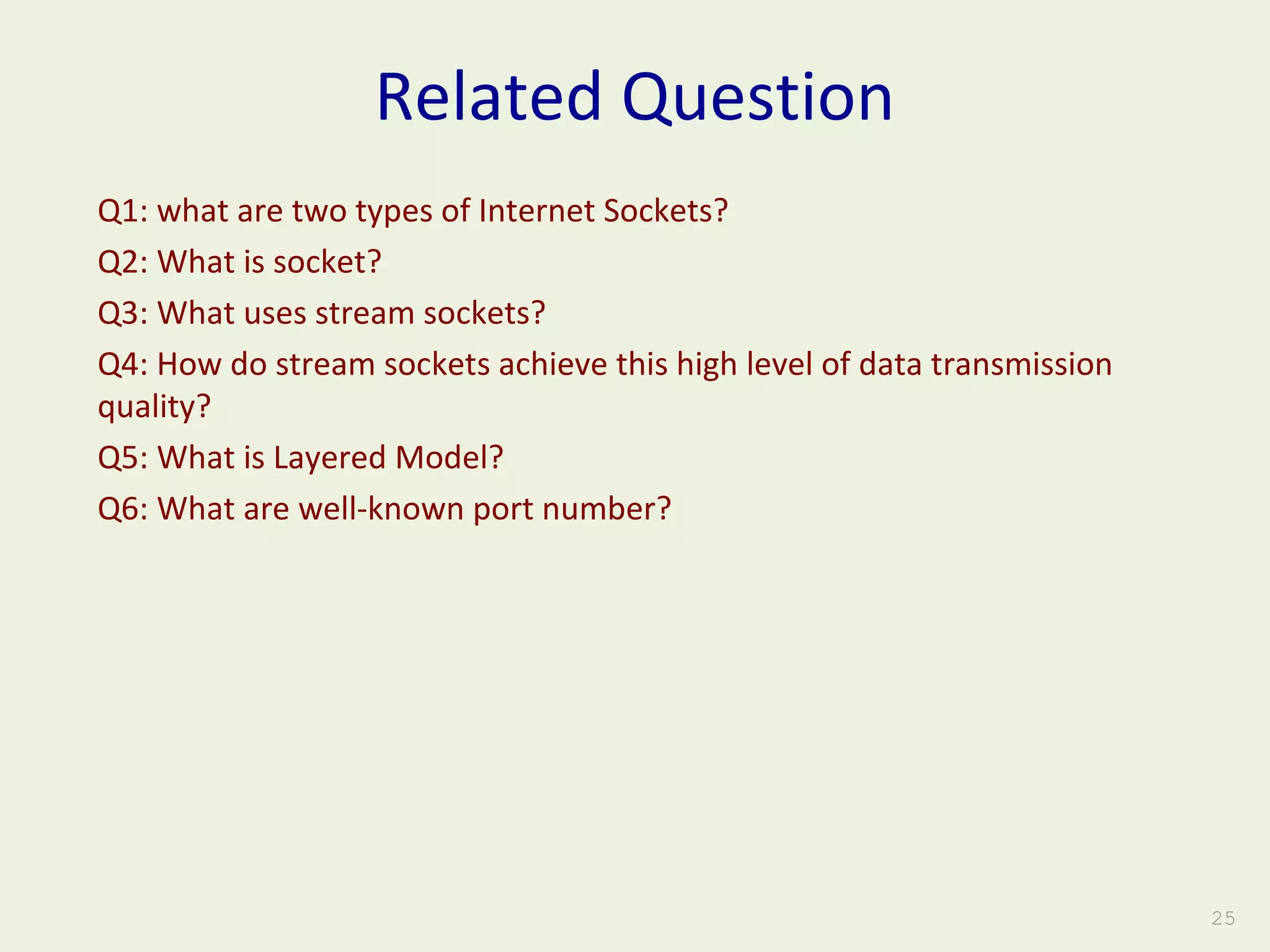
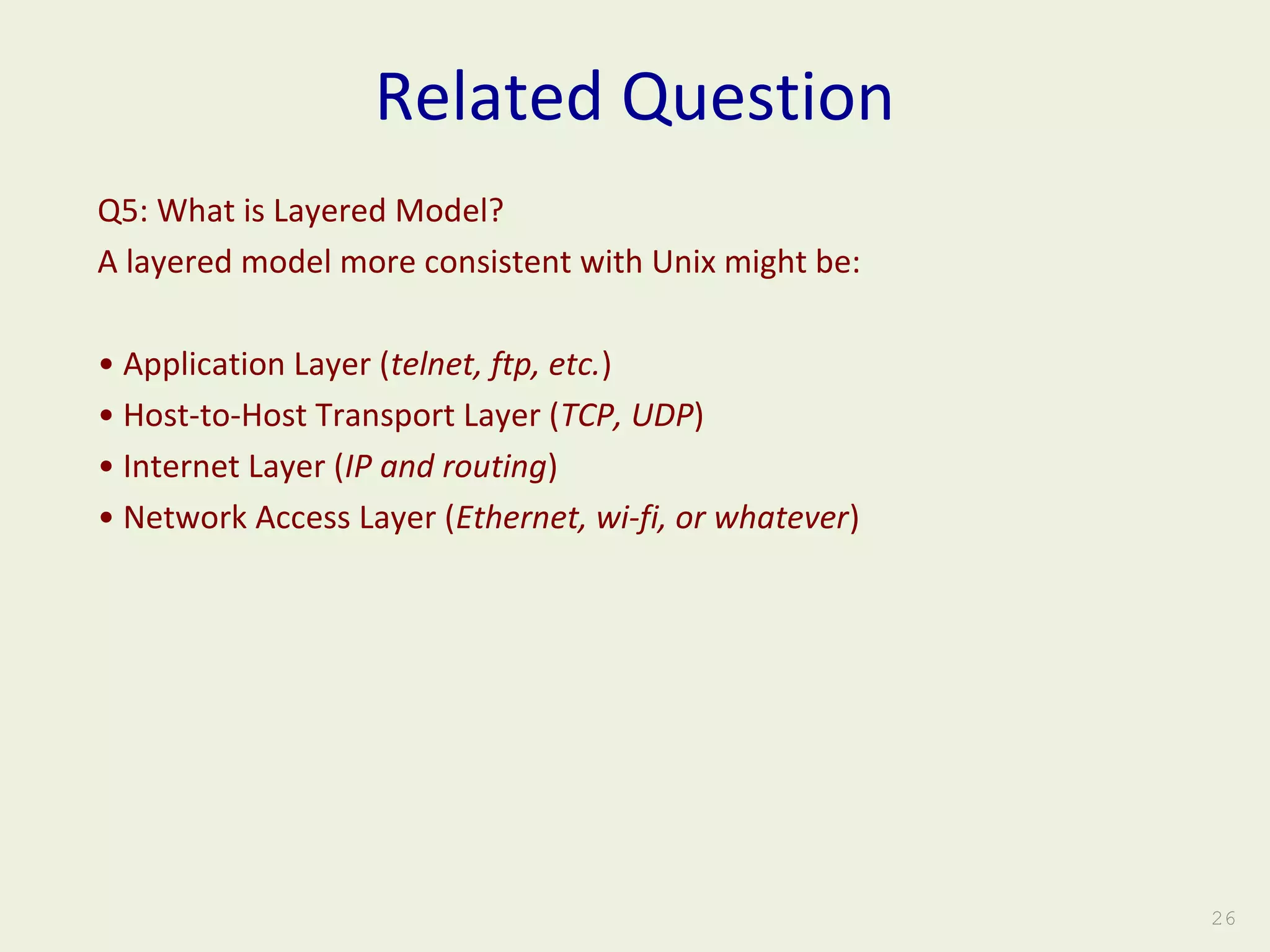
![REFERENCES [1] W. R. Stevens, B. Fenner & A. M. Rudoff, Unix Network Programming, Vol. I, 3rd Ed., Pearson Education. [2] W. R. Stevens , Unix Network Programming, Vol. II, 2nd Ed., Pearson Education. [3] Comer and Stevens, Internetworking with TCP/IP, Vol. I, II and III, PHI. [4] Christian Benvenuti, Understanding Linux Network Internals, O‘Reilly. [5] W. R. Stevens , Advanced Programming in Unix Environment, Pearson Education. [6]Brian “Beej” Hall,"Beej’s Guide to Network Programming Using Internet Sockets",2005. [7] Xi Liu,"Socket Programming",Computer Networks, Spring 2008. [8] Dave Hollinger,Socket Programming",Computer Network Systems. 27](https://image.slidesharecdn.com/intro-socketprogramming-180410165041/75/Socket-Programming-27-2048.jpg)